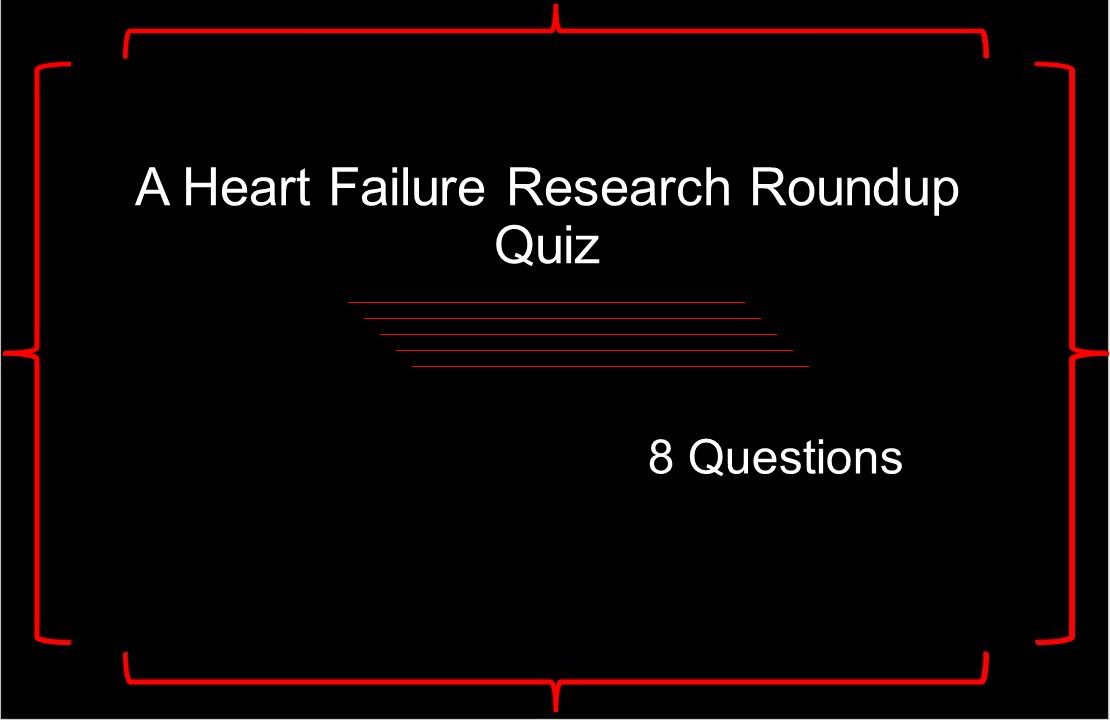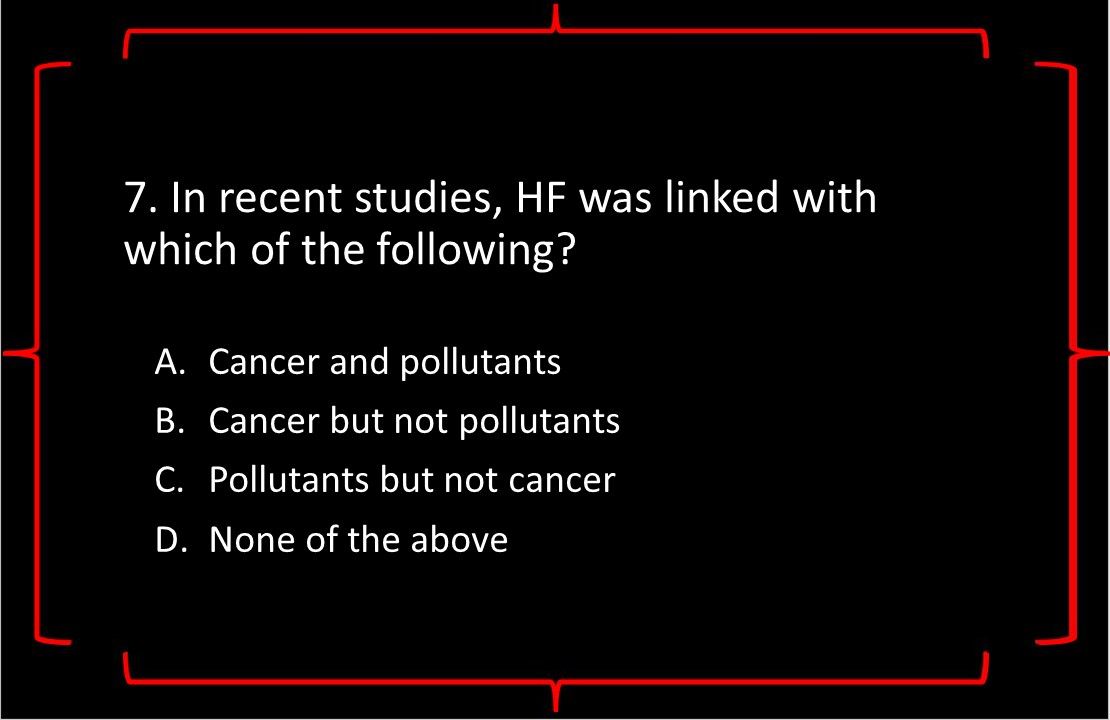© 2025 MJH Life Sciences™ , Patient Care Online – Primary Care News and Clinical Resources. All rights reserved.
A Heart Failure Research Roundup Quiz: 8 Questions
Advances in heart failure management, including inroads in treatment for HFpEF, are happening fast. Try 8 questions to find out how well you’ve been following the news.
Advances in heart failure management, including inroads in treatment for HFpEF, are happening fast. Try 8 questions to find out how well you’ve been following the news.
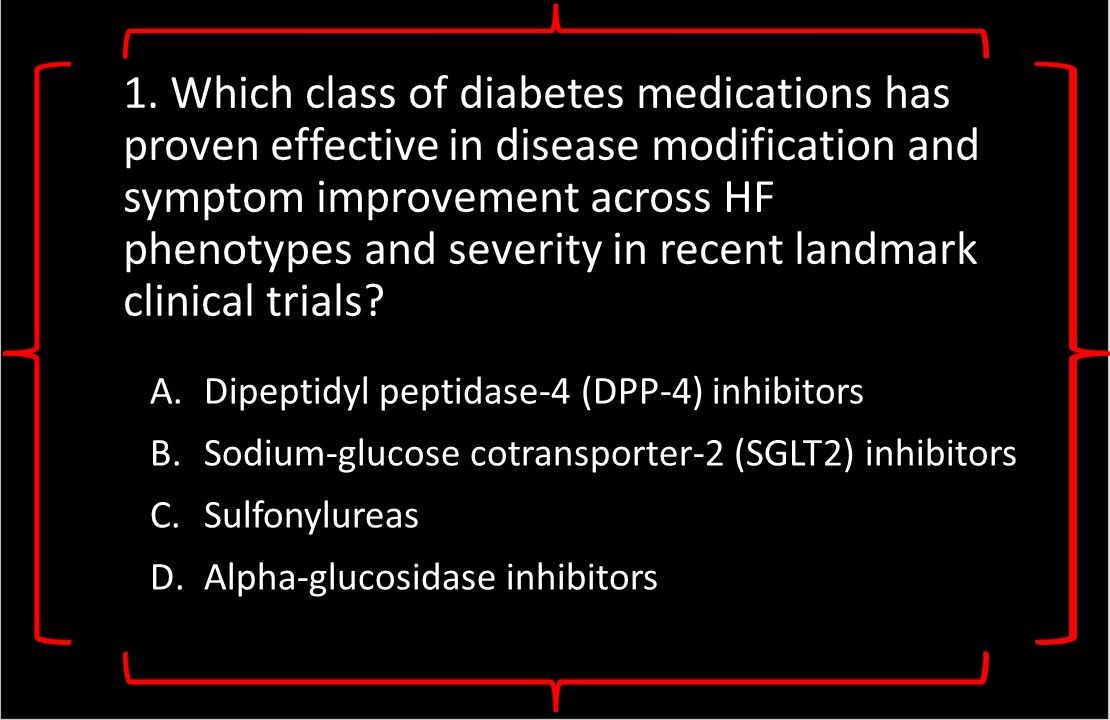
1. Which class of diabetes medications has proven effective in disease modification and symptom improvement across HF phenotypes and severity in recent landmark clinical trials?
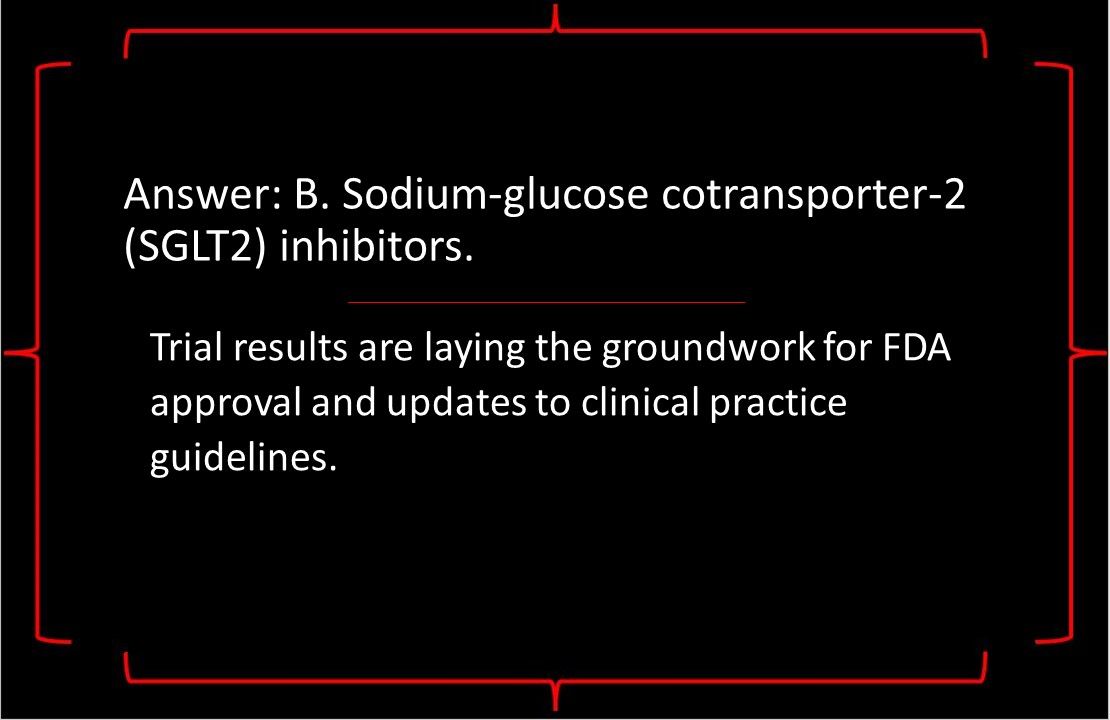
Answer: B. Sodium-glucose cotransporter-2 (SGLT2) inhibitors have proven effective in disease modification and symptom improvement across HF phenotypes and severity in recent landmark clinical trials.
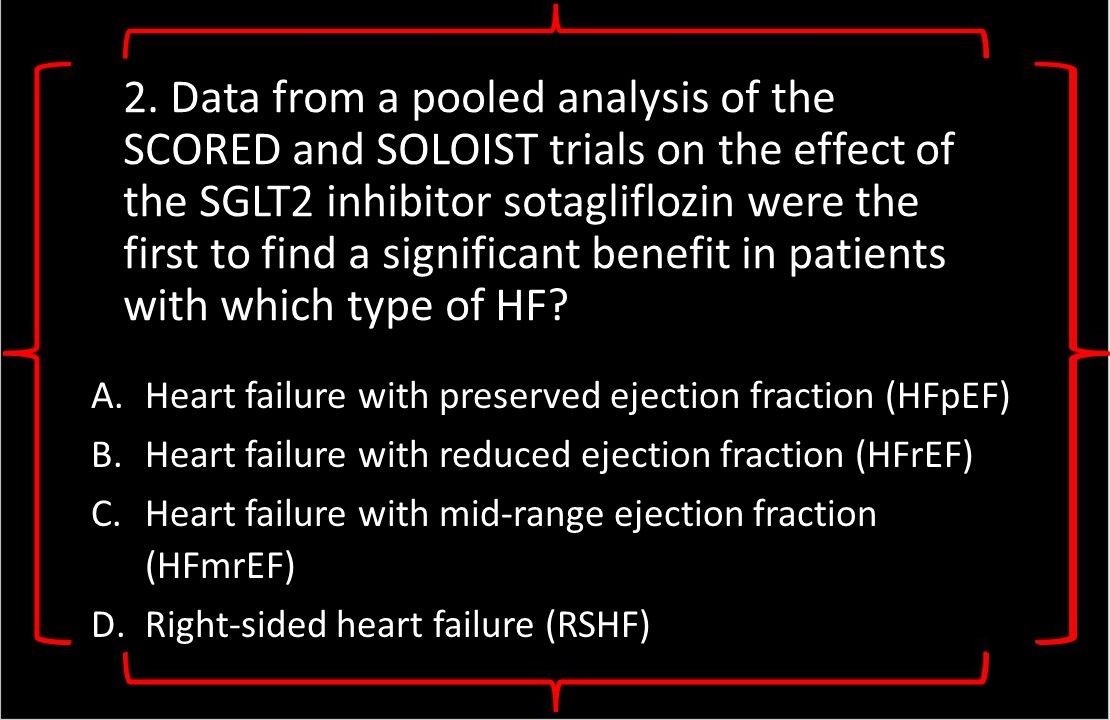
2. Data from a pooled analysis of the SCORED and SOLOIST trials on the effect of the SGLT2 inhibitor sotagliflozin were the first to find a significant benefit in patients with which type of HF?
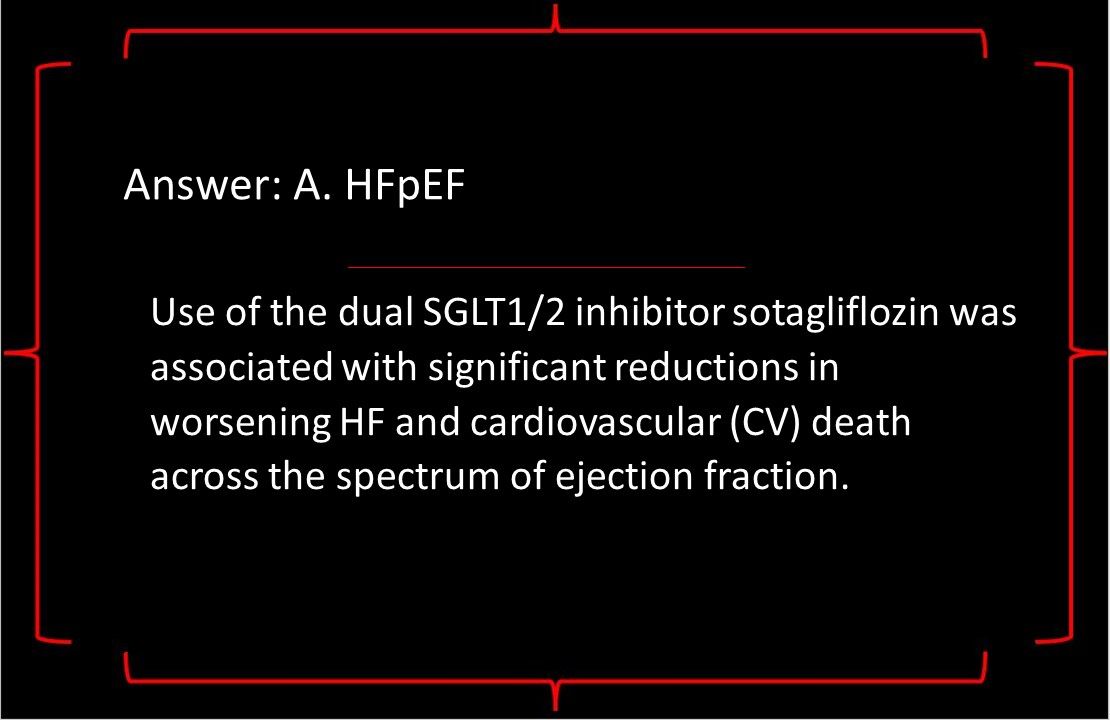
Answer: A. HFpEF. Use of the dual SGLT1/2 inhibitor sotagliflozin was associated with significant reductions in worsening HF and cardiovascular (CV) death across the spectrum of ejection fraction.
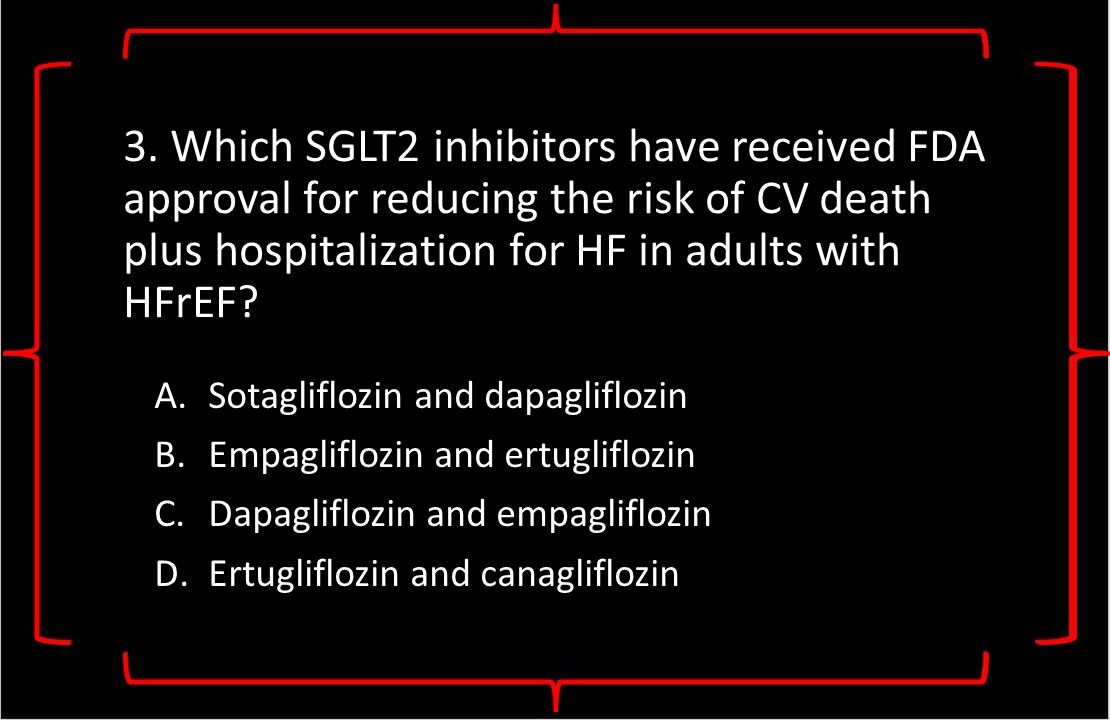
3. Which SGLT2 inhibitors have received FDA approval for reducing the risk of CV death plus hospitalization for HF in adults with HFrEF?
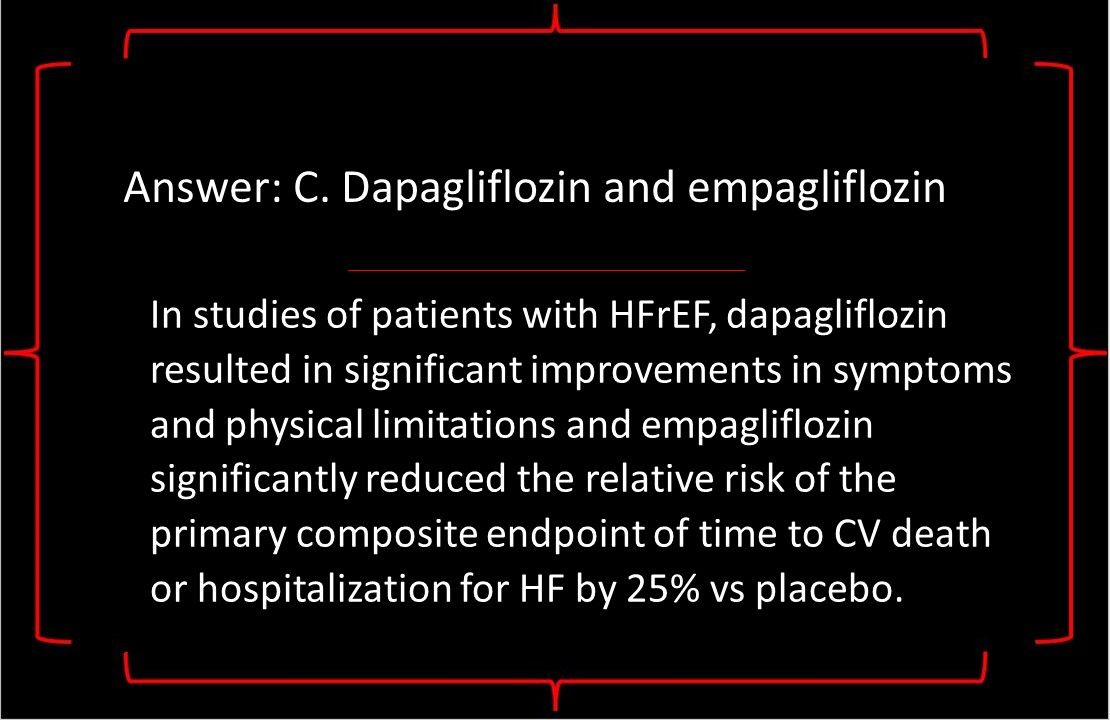
Answer: C. Dapagliflozin and empagliflozin. In studies of patients with HFrEF, dapagliflozin resulted in significant improvements in symptoms and physical limitations and empagliflozin significantly reduced the relative risk of the primary composite endpoint of time to CV death or hospitalization for HF by 25% vs placebo.

4. True or False: In a recent trial, hemodynamic-guided management of HF using remote pulmonary artery pressure monitoring resulted in a reduction in the cumulative incidence of HF events.
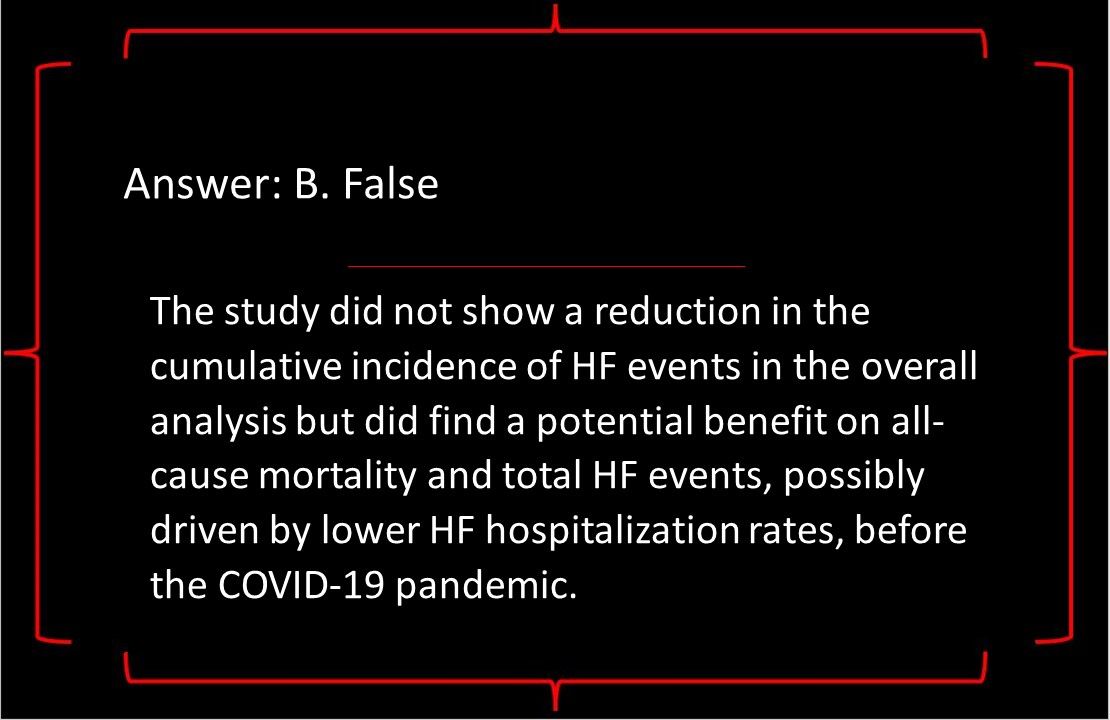
Answer: B. False. The study did not show a reduction in the cumulative incidence of HF events in the overall analysis but did find a potential benefit on all-cause mortality and total HF events, possibly driven by lower HF hospitalization rates, before the COVID-19 pandemic.

5. In a recent survey of patients with HF in the United States, how many reported missed or delayed medical care?
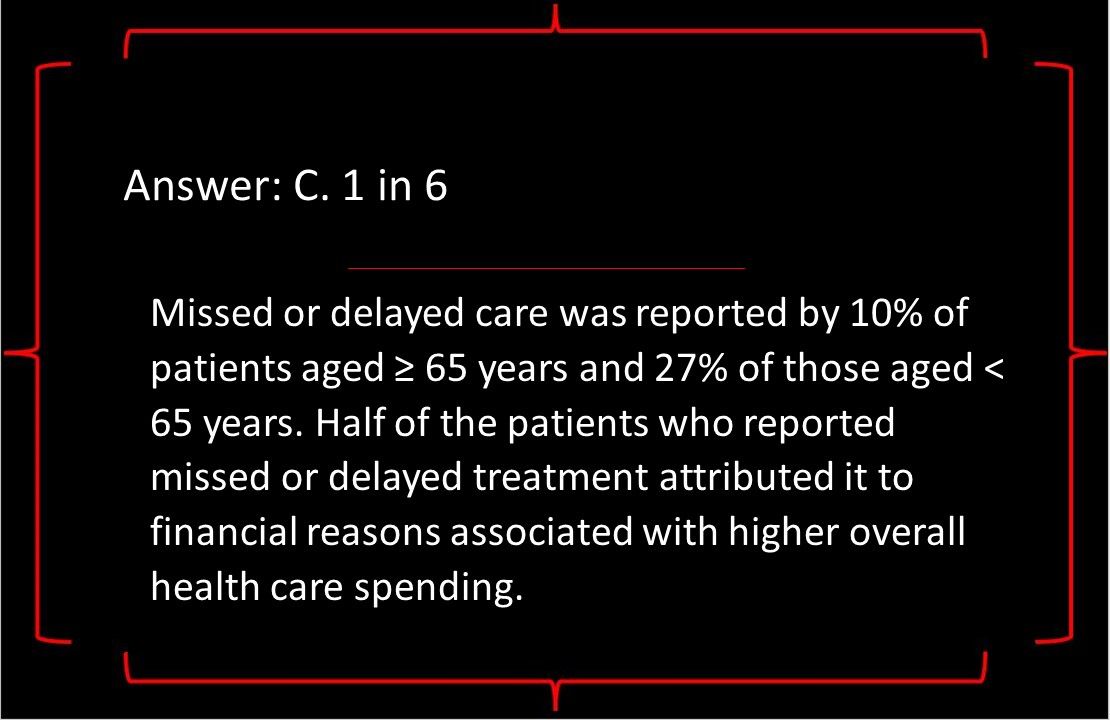
Answer: C. 1 in 6. Missed or delayed care was reported by 10% of patients aged ≥ 65 years and 27% of those younger than age 65 years. Half of the patients who reported missed or delayed treatment attributed it to financial reasons associated with higher overall health care spending.
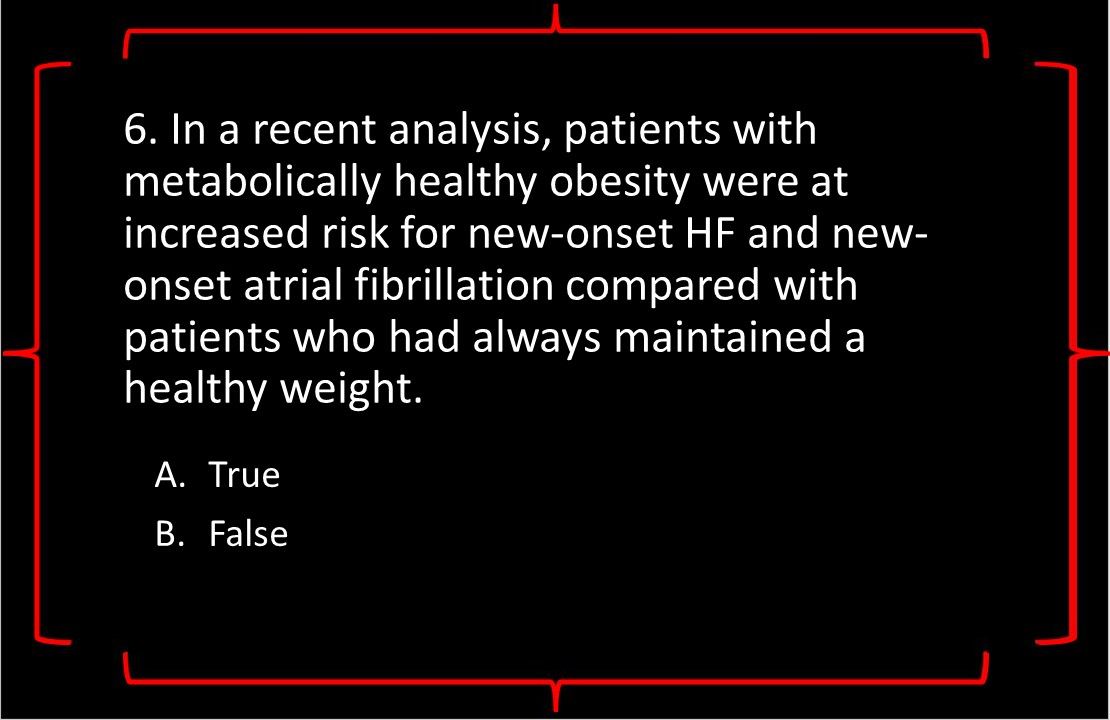
6. True or False: In a recent analysis, patients with metabolically healthy obesity were at increased risk for new-onset HF and new-onset atrial fibrillation compared with patients who had always maintained a healthy weight.
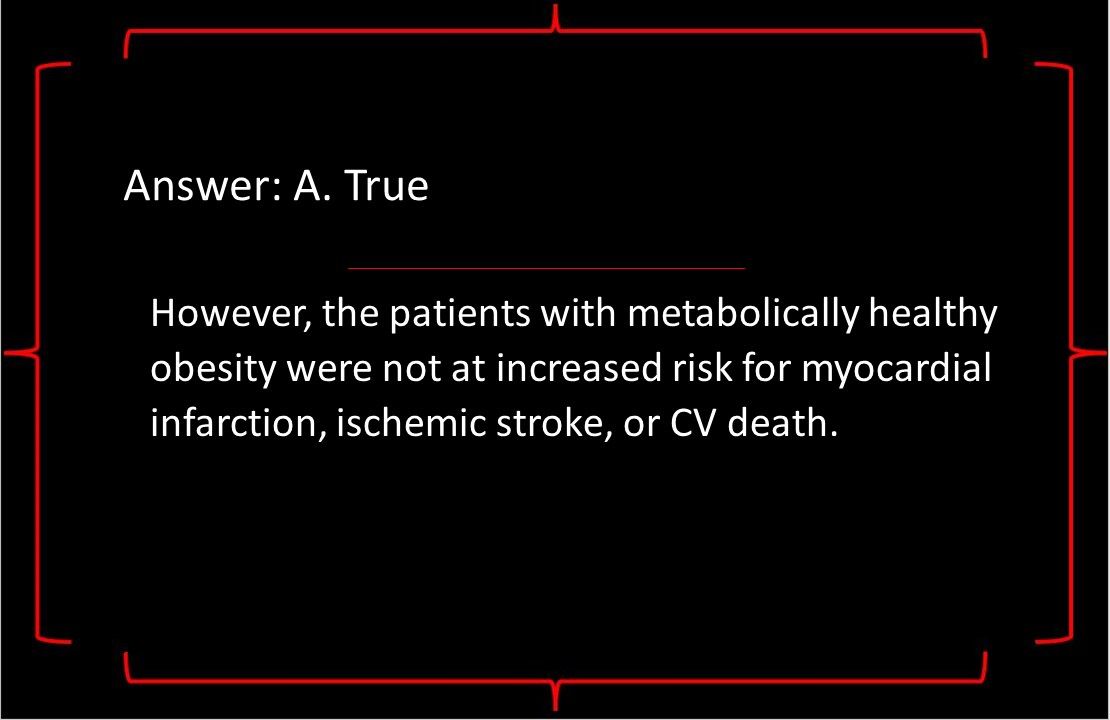
Answer: A. True. However, the patients with metabolically healthy obesity were not at increased risk for myocardial infarction, ischemic stroke, or CV death.
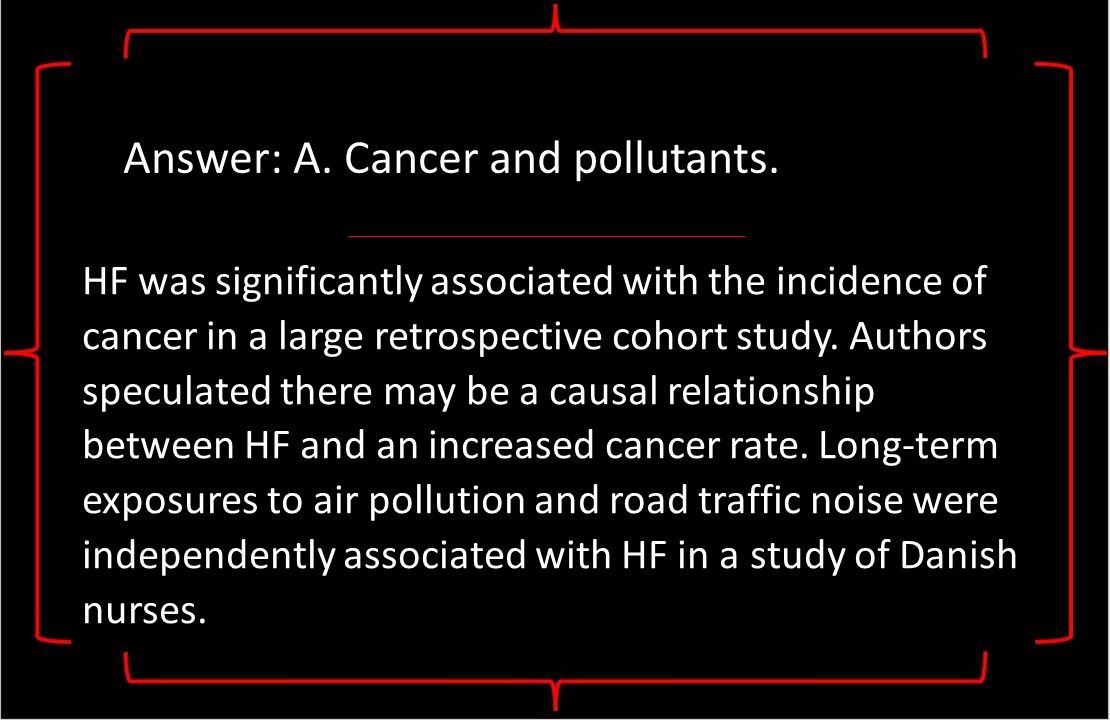
Answer: A. Cancer and pollutants. HF was significantly associated with the incidence of cancer in a large retrospective cohort study. Authors speculated there may be a causal relationship between HF and an increased cancer rate. Long‐term exposures to air pollution and road traffic noise were independently associated with HF in a study of Danish nurses.
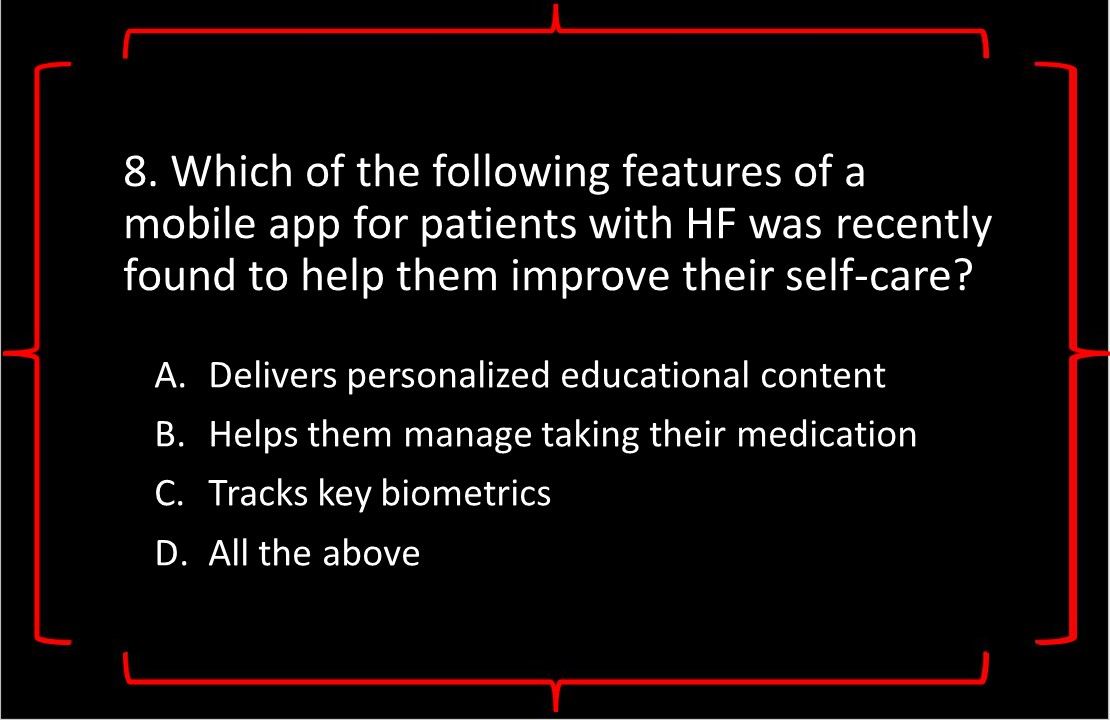
8. Which of the following features of a mobile app for patients with HF was recently found to help them improve their self-care?
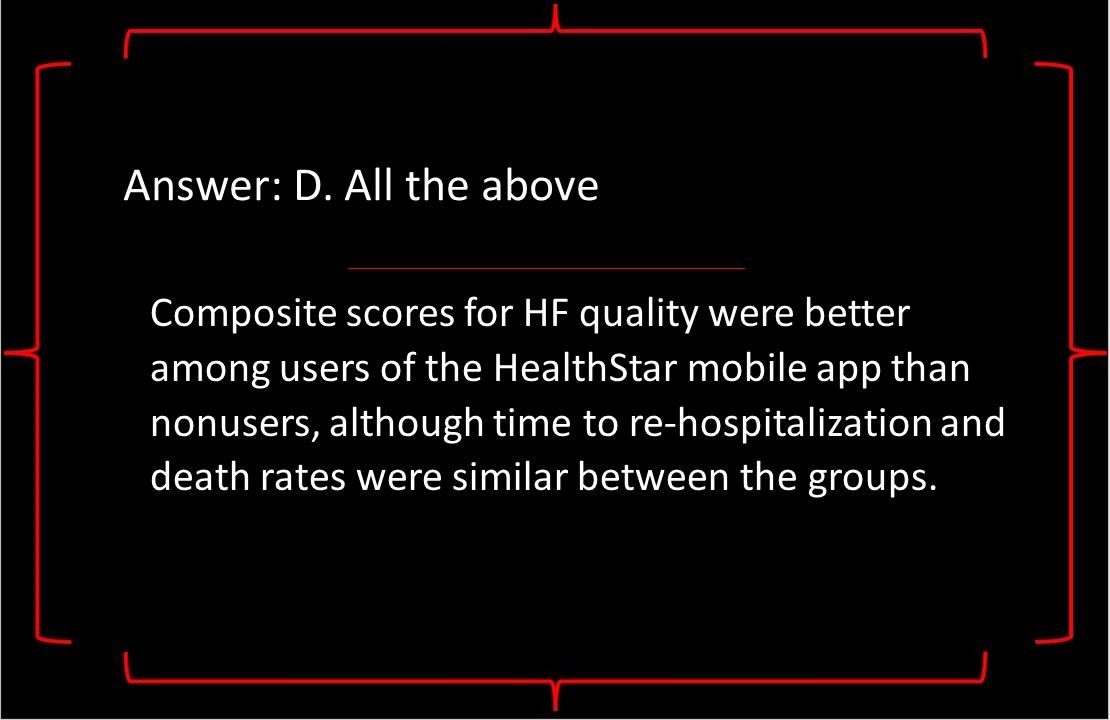
Answer: D. All the above. Composite scores for HF quality were better among users of the HealthStar mobile app than nonusers, although time to re-hospitalization and death rates were similar between the groups.
For links to all the research on which these questions are based, please see Heart Failure Milestones in Management: 9 Studies Making a Difference in 2021

